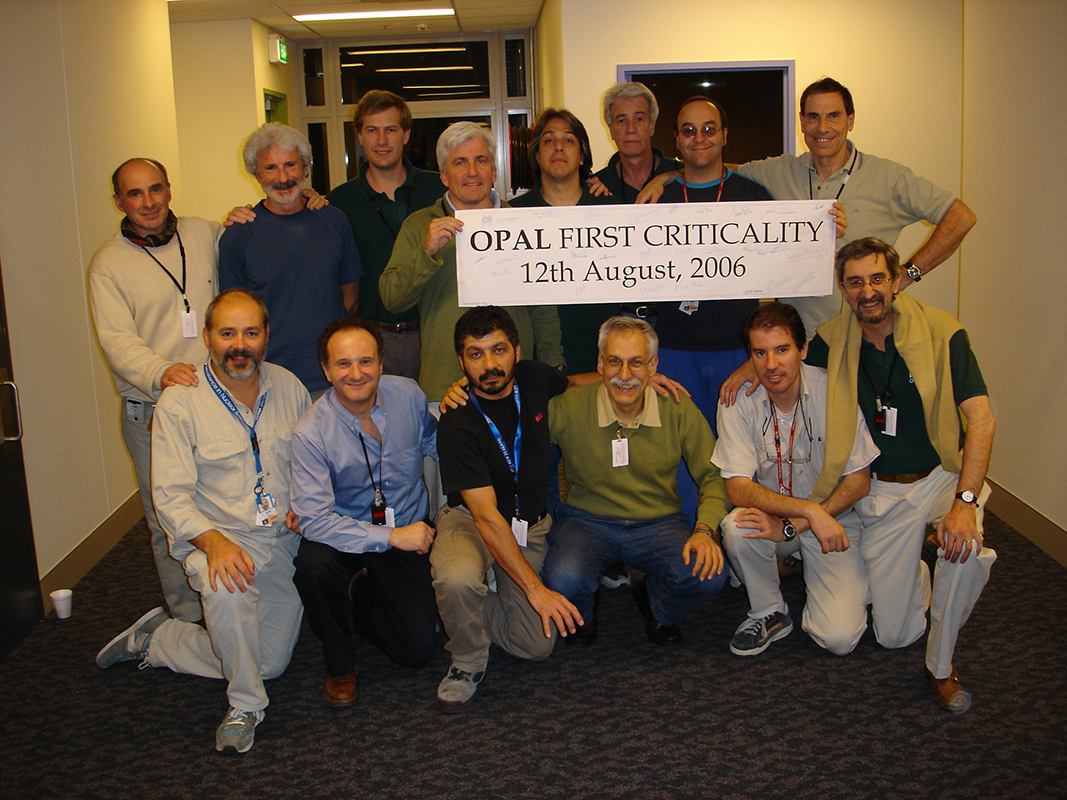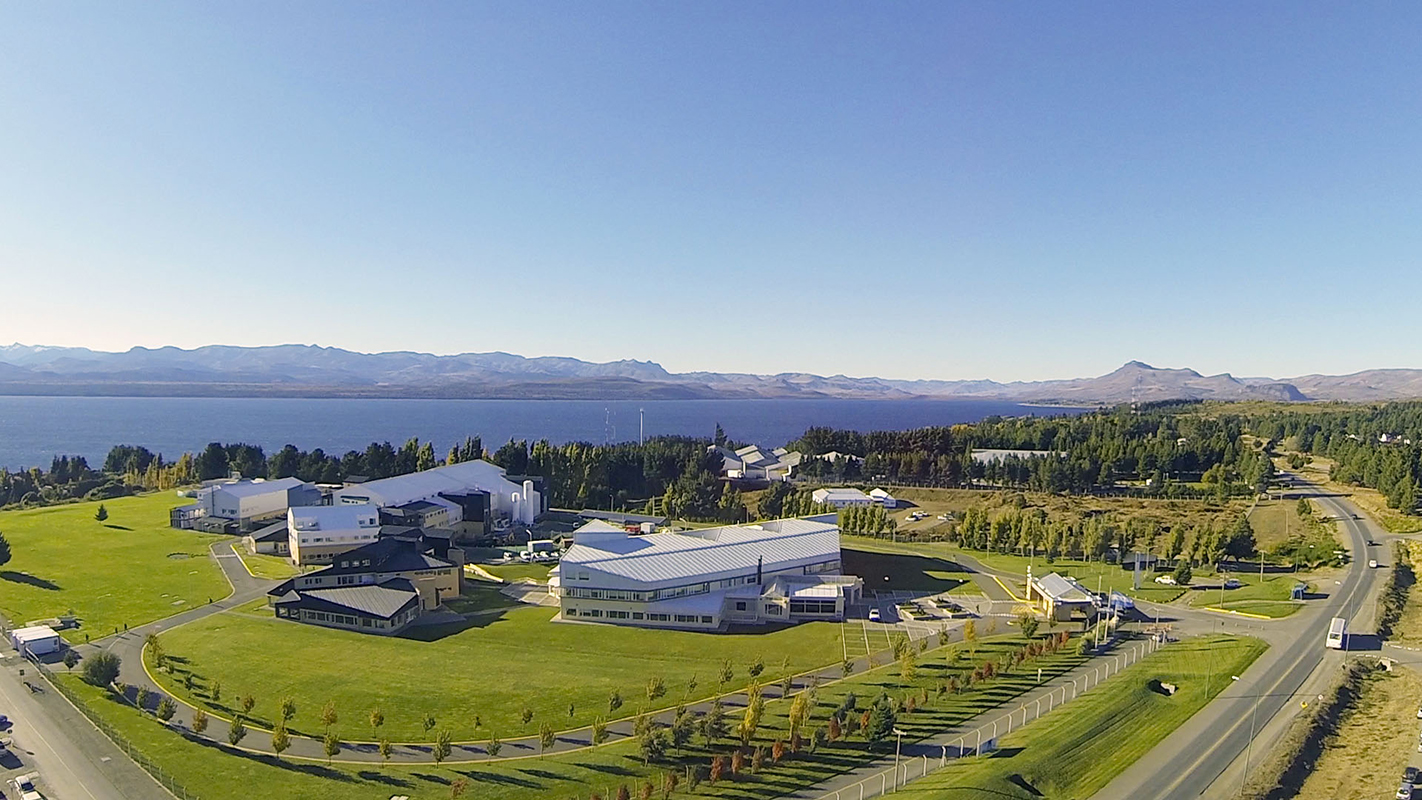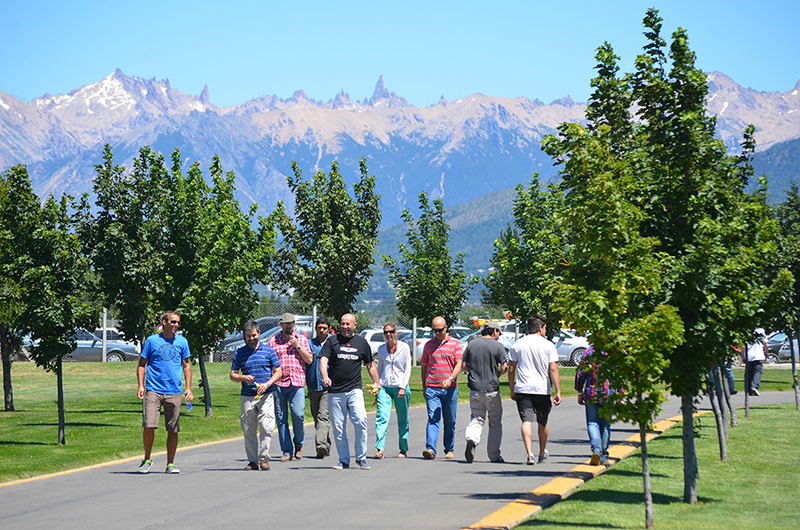2016
One day like today, but four decades ago, a group of young people belonging to the Argentine National Commission of Atomic Energy (CNEA, in Spanish), joined at a small room of the Bariloche Atomic Center (CAB, in Spanish), started to have a dream. Almost with no intention and without being aware of it, they were making history
Actually, everything began before the official foundation of “Applied Research” (Investigación Aplicada, in Spanish), which was the original name of the company. Back in 1972, Dr. Conrado Varotto formed a group of “Applied Physics” within CAB with the aim of “solving practical problems,” as he tried to explain a group of young scientists, many of whom had recently graduated from the Balseiro Institute.
Then, when the CNEA was established, the first projects were conceived, such as the zirconium sponge production pilot plant, the RA-6 reactor built in Bariloche, and the technological development to produce enriched uranium in Pilcaniyeu, which enhanced INVAP’s development in its first decade.
The projects
During the 1980s, the company exported the first turnkey research nuclear reactor to Algeria. Then, in the hard 1990s, it won the first tender to provide a reactor to Egypt. And finally, in the 2000s, it signed a contract to build the Opal reactor for Australia, one of the most modern in its kind in the world, which a few days ago celebrated its tenth anniversary of correct operation.
As a consequence of all this, today we are invited to take part in tenders for contracts to build reactors of this kind all over the world. Besides, thanks to the success of the OPAL project, we are now building two twin reactors, the RA-10 in Ezeiza and the multipurpose RMB, in Brazil. We are also taking part in the
project called Argentine Modular Element Facility (CAREM, in Spanish), which is now being built by the CNEA.

Furthermore, in 1991, after the Argentine National Space Activities Commission (CONAE, in Spanish) signed a cooperation agreement with the NASA, the U.S. space agency, we started developing satellite capabilities. Since then, we designed and built the Scientific Applications Satellites SAC-B, SAC-A, SAC-C (which beat the record for having been in operation four times its expected lifetime) and SAC-D/Aquarius, which, in some way, crowned our twenty-year period of cooperation with the NASA. We also ventured into the field of communication satellites! And so the ARSAT-1 and ARSAT-2, which are a source of pride for all Argentinians, were launched.
As a derivative or spin-off product of the satellite technology employed in the SAOCOM satellite project (being now under construction), we saw the possibility to design and build earth radars. This new stage began in 2002 with the building of a first prototype and, then, of 22 secondary radars for airspace control all over the airports of the country. Later, we built the Argentine Primary Radar (RPA, in Spanish) for defense purposes, and more recently, the meteorological radars for the Undersecretary Office of Water Resources.
We also export equipment and have built nuclear and radiotherapy medicine centers abroad for the treatment of cancer. Nowadays, we are collaborating with an ambitious national program, under CNEA’s management, to build at the CAB the first radiotherapy center for our beloved city of Bariloche.
This is not to mention more than one thousand technological projects carried out by INVAP so far, including an Unmanned Air Vehicle, the Open Digital Television, the development of wind and hydrokinetic energy, and the hip prostheses, which are now being implemented.
A company with values
Beyond the initial vision of Varotto and the founding group, what is the common denominator of INVAP actions throughout the years? Which is the ever present element in every new challenge? The answer is: its members, an extraordinary human team formed by people with several different abilities pursuing a common goal.
Furthermore, we foster many essential values that inspire and encourage us to improve and grow professionally and as persons. We share the same esprit de corps, the courage to face all kinds of difficulties —not only technological ones— and a national ideal “against mental colonialism”; that is, the resolution to avoid that our capacities were underestimated in comparison with those of more developed countries.
We could say that in the history of our company we do have a commonly elaborated mission which consists in developing and carrying out technological projects providing our customers with strategic value, in the context of a self-sustaining company.
It also consists in creating genuine sources of employment, encouraging the development of the staff and of the communities where it operates, while protecting the natural environment. It is not an impossible mission. It is simple, but not easy to achieve. Nothing really worthy is done without a cooperative effort. And we are working on it.
We take great pride in being part of a supportive organization in which every employee, from the one with the greatest responsibilities to the one more recently incorporated, has a strong commitment. Thanks to its mutual nature, the staff organization has gained special benefits, such as scholarships, housing plans, sports club and a nursery school. Besides, the staff also selects a fully participating Director and the profits of the company are equally distributed among all its members.
Furthermore, our achievements have been based on some other reasons, like the fact that INVAP’s income comes only from the work it generates; that one hundred percent of INVAP property belongs to the Province of Río Negro; that its social objective is to create genuine sources of employment by developing new technologies; that it reinvests its earnings; that to maximize profits, even when it is fundamental to ensure the sustainability and growth of the company, is not its main goal.
All these elements constitute a non-traditional business management model involving a different working relation in which the workers’ and company’s interests come together. This model, which is in continuous evolution, is a key element in this company.
Future challenges
Our future challenges are big and varied. That is why we invite our people to combine efforts and keep on sweating together for this project. We should redouble our endeavors to achieve our vision: to be a protagonist in Argentina’s development and a leading company in the field of technological projects all over the world.
We owe what we are to our country, our province and the community of
Bariloche, whose needs we will always be eager to meet.
Our doors are always open and we welcome new ideas, criticisms, contributions and solutions that may help improve our daily working environment and the development of INVAP.
On this new anniversary, we encourage our staff to keep on using their talents in a company that is worth the effort, and to feel prouder than ever for being part of this project.
Today, we go on making history together.
Héctor “Cacho” Otheguy
General Manager and CEO
INVAP SE

